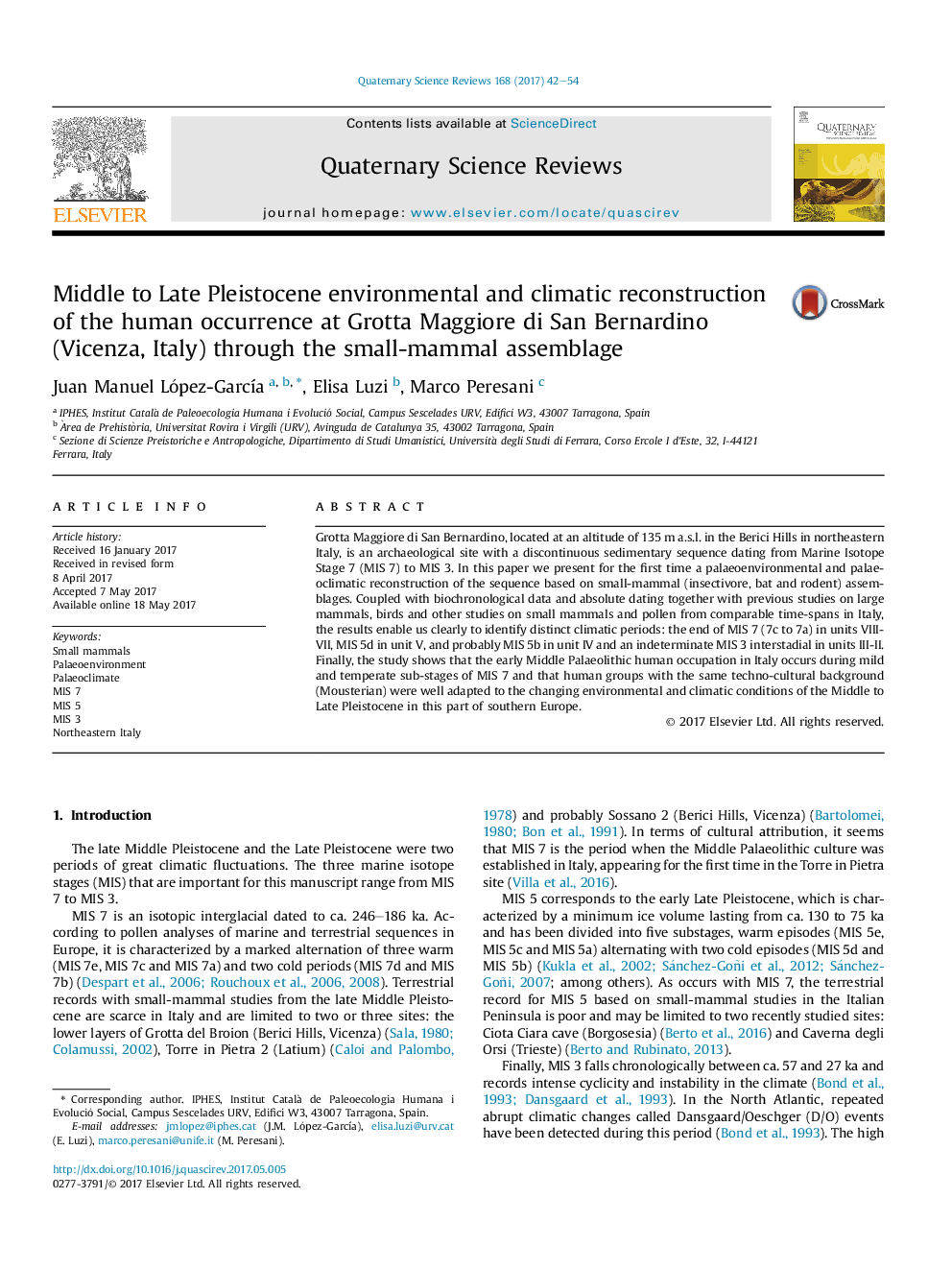| Article ID | Journal | Published Year | Pages | File Type |
|---|---|---|---|---|
| 5786607 | Quaternary Science Reviews | 2017 | 13 Pages |
â¢San Bernardino have a discontinuous sedimentary sequence dating from MIS 7 to MIS 3.â¢Environmental and climatic reconstruction based on small-mammal assemblages is done.â¢Results allows to identify distinct climatic periods: MIS 7c-7a, MIS 5d, 5b and MIS 3.â¢Middle Palaeolithic human occupation in Italy occurs during mild sub-stages of MIS 7.â¢Human groups were well adapted to Middle-Late Pleistocene changing conditions.
Grotta Maggiore di San Bernardino, located at an altitude of 135Â m a.s.l. in the Berici Hills in northeastern Italy, is an archaeological site with a discontinuous sedimentary sequence dating from Marine Isotope Stage 7 (MIS 7) to MIS 3. In this paper we present for the first time a palaeoenvironmental and palaeoclimatic reconstruction of the sequence based on small-mammal (insectivore, bat and rodent) assemblages. Coupled with biochronological data and absolute dating together with previous studies on large mammals, birds and other studies on small mammals and pollen from comparable time-spans in Italy, the results enable us clearly to identify distinct climatic periods: the end of MIS 7 (7c to 7a) in units VIII-VII, MIS 5d in unit V, and probably MIS 5b in unit IV and an indeterminate MIS 3 interstadial in units III-II. Finally, the study shows that the early Middle Palaeolithic human occupation in Italy occurs during mild and temperate sub-stages of MIS 7 and that human groups with the same techno-cultural background (Mousterian) were well adapted to the changing environmental and climatic conditions of the Middle to Late Pleistocene in this part of southern Europe.
